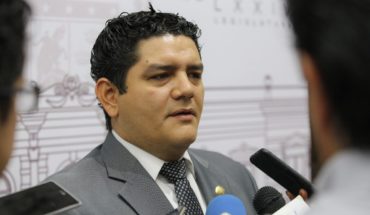
The appointment of industrial civil engineer José Miguel Benavente as the new Executive Vice President of CORFO
in the government of Gabriel Boric, it should serve for a new analysis of the hitherto postponed prospects of reindustrializing Chile. What 50 years ago seemed an easy task, industrializing Chile, is today an uncertain task. Without an industrial component of a certain complexity in the national product we will not achieve economic development. At least it is the experience that teaches us the small number of countries that have achieved economic development with a modern industrial component:
South Korea, Australia, New Zealand and some of the new European countries. Industrial development was not the only thing paralyzed by the 1973 military coup. The ability of engineer training to support reindustrialization was also destroyed. The specialist engineering that was formed to design, design and build machinery and processes, in the universities, was reoriented to the operational maintenance of large mining and complementary activities.
Industry, which accounted for 25% of the Gross National Product in 1970, was reduced to 10%. In addition, its composition and complexity were changed: it included products made in all industrial branches, including domestic manufacturing.
of the so-called white line, washing machines, refrigerators, kitchens and stoves. It is currently composed of products
little processed (cellulose, paper, pasta, bread, noodles, inputs for mining and the export of methanol,) What is the outlook for industrial development, when the new leftist government takes office?
There are few things that appear clear: Chile must recover the capacity to manufacture nationally the sources of electrical energy: solar panels, windmills, motors, cables and transformers. Not only because it is a privileged country in solar energy and wind, but because they are relatively simple technologies that can be exported to the entire continent. Different matter is the manufacture of lithium batteries as a national input and for export. Its technology is simple and we can easily master it, but batteries have little added value and are difficult to transport. Perhaps it will be better to concentrate on grinding lithium, making batteries as an input for domestic products, and exporting highly refined lithium.
Until recently it was thought that lithium technology, to generate rechargeable energy, would have a horizon of about 30 years before being displaced by the technique of electricity generation from the synthesis of oxygen and hydrogen generated.
by solar energy and wind. That horizon is proving to be doubtful and there are already automotive companies preparing
for a longer-term horizon of lithium technology and for new industrial branches.
It is a complex matter to decide whether in Chile we will be able to manufacture an economical electric drive car for its popular sectors. Some 100,000 popular cars will be needed per year, an amount that will have to be studied if it is enough to make that industrial branch bankable. The manufacture of the automotive parts and the final assembly has the advantage that it can be established in various regions of the country. Its feasibility could be complemented by manufacturing electric motorcycles.
The manufacture of electric means of transport has been simplified and is now within the reach of smaller countries like ours. The great input for a mining country like Chile is to manufacture its own mining equipment. Machines for the movement of aggregates, excavators, drills and conveyors. In the future, explosion engines in mining will be abandoned and converted to electric drive with rechargeable batteries. They are technologies within reach of our current development possibilities.
One could also think of industrial integration treaties with neighboring countries and partial assembly in our territory.
This is not a novel idea, it was planned in agreements with neighboring countries in the last century, before the coup, and discarded by the military government. It will be necessary to plan the formation of technical teams at medium, university and research level to meet the complex needs of the large mining industry and the new industrial branches. In addition, a working class of specialists required for the new industrial stage and for the new economy will have to be formed. The change in the VicepreCORFO’s sidencia opens the possibility of reorienting the work of this basic institution for new industrial initiatives in the country. We maintain the question we asked at the beginning of this note: will it be possible to reindustrialize and modernize Chile’s economy?
The content expressed in this opinion column is the sole responsibility of its author, and does not necessarily reflect the editorial line or position of El Mostrador.





